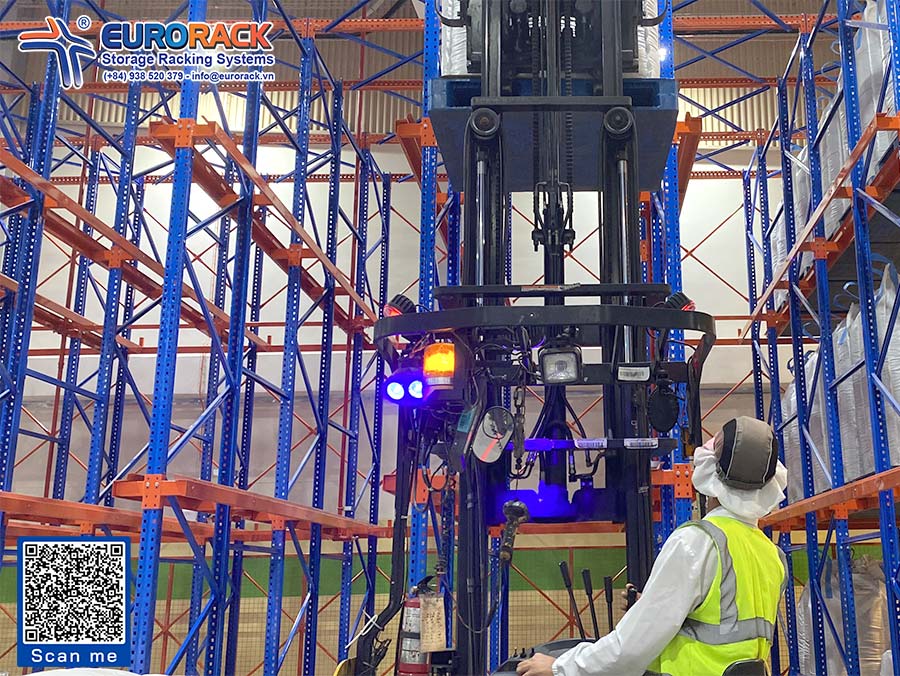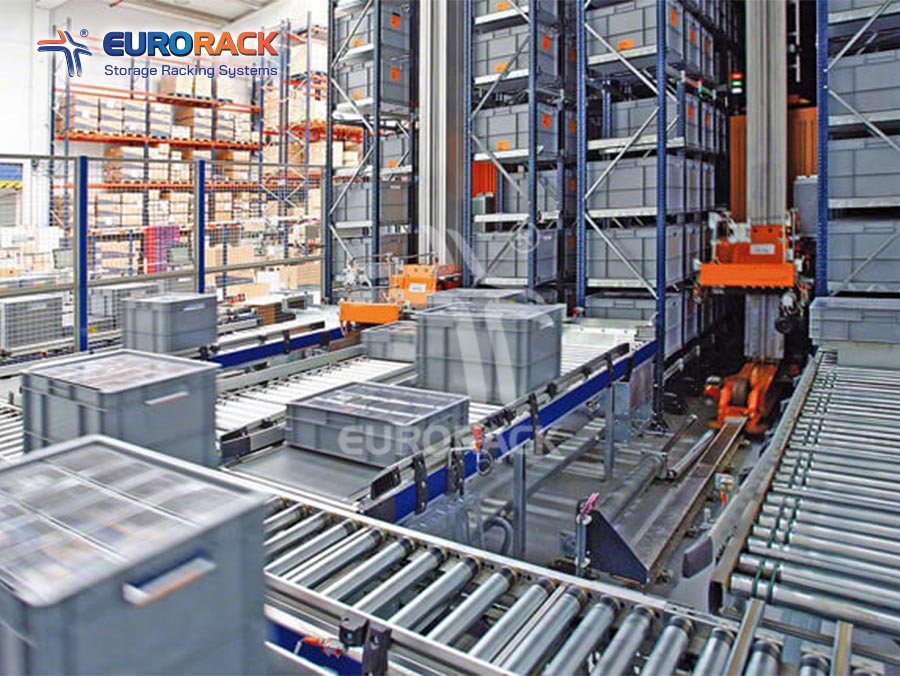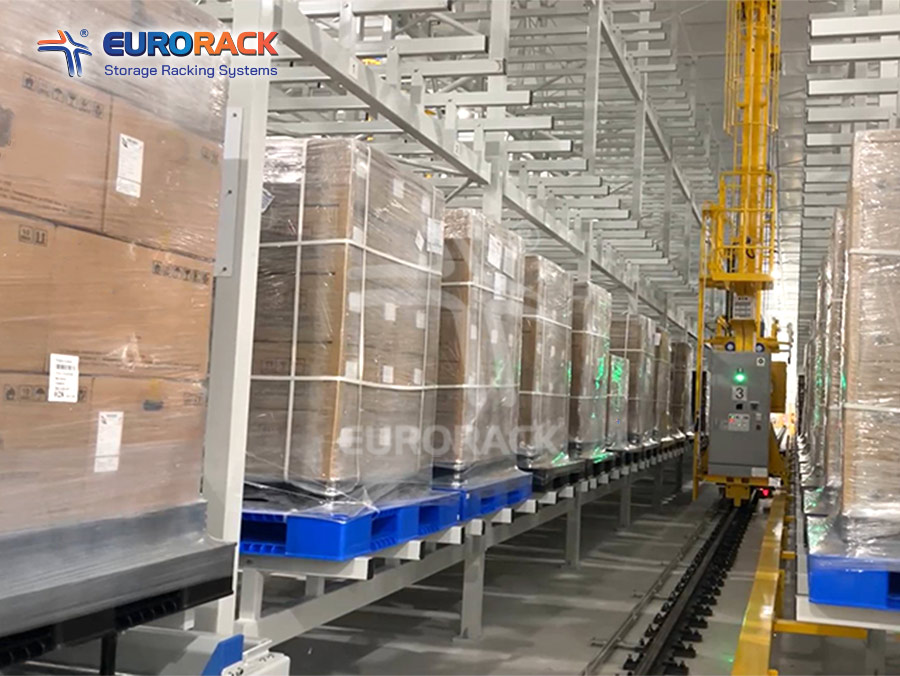- Hotline: (+84) 938 520 379
- Email: info@eurorack.vn

Join Eurorack to learn about the opportunities and challenges of smart warehouses
Logistics encompasses all activities from raw material warehousing, outbound logistics, storage, and packaging, to transportation. Thus, automation in logistics is the process of applying technological advancements to the operational processes of the logistics chain.
Typically, logistics automation occurs within factories or large distribution centers, focusing primarily on tasks handled by modern technical means to reduce manual labor and shorten processing times. It especially minimizes the risk of damage and losses to the lowest possible level.
The importance of automation in logistics is increasingly emphasized as the COVID-19 pandemic disrupts and breaks numerous supply chains. The question arises: Why should businesses automate logistics?
These impacts pose a challenge in forming automation requirements for logistics operations.

Automation in logistics is a factor promoting sustainable growth
Redirecting robot-assisted material handling operations and technology-controlled "just-in-time" platforms in warehouses primarily aims to reduce manual labor and processing times.
Technological capabilities are the key to unlocking seamless logistics operations. Once order processing times are shortened, the organization's competitive advantage is quickly affirmed and strengthened.
Technology facilitates inventory checking and monitoring based on the most transparent standards. Post-automation ensures that inventory is used to its fullest potential, minimizing waste. Using automated management software helps prevent production and inventory from exceeding consumption or falling short of market demand.
Even the smallest errors can lead to significant losses. Somehow, post-automation allows for automatic access to the storage system. All storage data is accurate, without errors. Cases of damaged inventory are quickly detected and handled promptly.
Continuous information updates avoid data errors or dispersion, reducing processing time.
While attracting new customers is essential, retaining existing customers is equally important. Automation aspects expedite the packaging and transportation processes, providing a foundation for meeting customer needs under optimal conditions.
Transparency is the key to any business operation. Without it, it's challenging to determine accurately what is wrong and why. Automation provides a clearer display of inventory and shipping data, ensuring greater transparency. With transparency, subsequent business decisions are better, bringing more benefits to the company.

The company enjoys many benefits from setting up automatic warehouses
To create an automated working environment in the field of logistics, businesses must equip themselves with essential resources such as employee training in machine operation, management and analysis tools. Particularly, automated racking systems are indispensable, as they ensure safe and swift storage and movement of goods, thereby achieving high operational efficiency.
No one can deny the advantages of automation. However, every opportunity also comes with challenges:
The average cost of investing in logistics automation is relatively high. They are 3-4 times higher than usual standards. Securing large budgets is a significant issue many businesses face, especially small and medium-sized enterprises.
The process of transitioning and operating technology in the logistics chain demands high-quality training. Meanwhile, the current conditions do not allow for the smooth operation of the management chain, posing many difficulties.
Transportation: Logistics automation is present in transportation operations, especially in road transportation, through the process of loading and unloading goods, saving up to 50% of time and energy using automated robots.
Storage Warehouse: Automated Storage and Retrieval Systems (ASRS), and automated storage systems using Shuttle robots for safe heavy cargo circulation within the warehouse.
Organization and Data Management: Information systems provide alerts, support planning, and management of supply chain components to ensure the smoothest flow of goods.
When automation in logistics is no longer a phenomenon, it becomes a modern trend in supply chain operations. Businesses should seek appropriate solutions with the appropriate strategic goals to "restrain" and counter challenges, as well as maximize the advantages they bring. Hopefully, this article has provided you with the most comprehensive overview of automation in the logistics domain.
Related articles you may be interested in: Automation In Warehousing - The Rise Of Robotic Order Picking
-------------------------------------
EURORACK MECHANICAL JSC
Hotline: 0938 520 379
Mail: info@eurorack.vn
Website: eurorack.com.vn
Address: No. 5/3 Doan Thi Diem Street, Ward 1, Phu Nhuan District, HCMC, VietNam